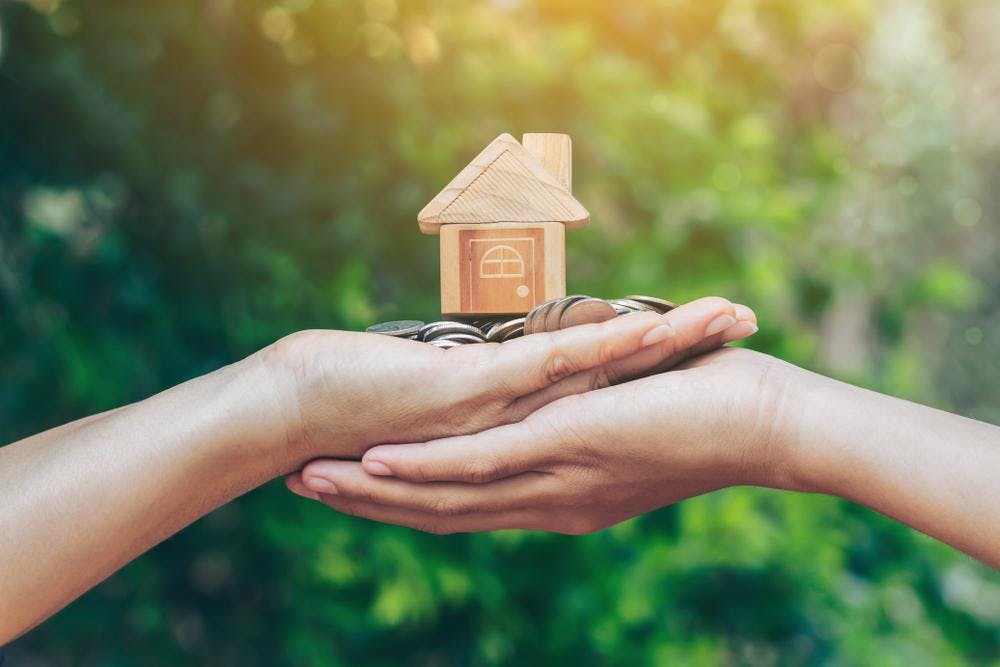Climate change can feel like an abstract concept to many Americans. What’s more real are skyrocketing energy costs – the highly tangible reality more homeowners deal with in the face of colder winters and hotter summers.
This has prompted many households to build or renovate a more sustainable home – to cut both their carbon footprint and bottom line. The figures bear that out.
The number of single-family U.S. home builders reporting at least 61% of their projects as “green” rose from just under one-third in 2015 to 44% in 2022. Real estate agents surveyed in 2021 by the National Association of Realtors® said more than half of their clients were interested in sustainability and one-third helped a client buy or sell a property with green features in the previous 12 months.
Green homes attempt to improve energy efficiency with minimal environmental impact through the design, construction, maintenance, operation, renovation and deconstruction of the building. Remodeling projects can make just as much of an impact than new construction, though involve more layers to address existing plumbing, electrical and carpentry in the home.
It is this growing consumer interest that has contributed to an expansion of the sustainable single-family-home construction market. Research shows Millennials, in particular, are expressing greater interest in sustainable and net-zero-energy homes, as well as demanding less exposure to toxins and contaminants from building materials.
The aim is to meet higher standards to reduce air pollution in the home and improve environmental health for communities. Those standards take many forms.
Established certifications, rating systems and design standards are based on scientific and medical research that affects our health and come in several names. They include the WELL Building Standard and Fitwel, both globally recognized and focused on delivering extensive natural daylight and improved air quality to the home while also reducing energy costs, as well as injecting emotional wellness to support mental health.
“Spaces to relax, reconnect, work out, and nourish the body, mind, and soul are much more than a value-add in residential environments,” says Nancy Ruddy, co-founder of New York City-based CetraRuddy Architecture. In speaking with Realtor Magazine®, Ruddy says her firm’s research indicates wellness-focused housing is increasingly sought by today’s buyers.
One of the best examples of this intentional, sustainable living is Bower, a large-scale, mixed-use residential building in Boston. Bower, which currently is pursuing Fitwel status, offers a walkable location, greenery inside and out, and smart glass that automatically tints in response to ambient light levels throughout the day.
Locally, the Master Builders Association of King and Snohomish Counties is on the leading edge of a Built Green home certification program to help promote safer, healthier buildings as well as deliver on our region’s ambitious climate action plan targets.
Many municipalities and utilities already offer incentives for certifying through Built Green, which uses a rating system of three to five stars and “Emerald” for net-zero emissions. These incentives include cash rebates, reduced fees and expedited permitting.
Employing green building incentives, 73% of all newly constructed single-family homes in Seattle were Built Green certified in 2019 (latest available data) and certified more than 40,000 homes. In addition to Seattle, there are green building programs in the cities of Shoreline, Issaquah, Kirkland, Bellevue, Redmond, Everett and others.
More and more residential homes are pursuing LEED certifications, which is a points-based accounting of 16 minimum requirements to meet energy-efficiency prerequisites. There are four levels of certification:
- LEED Certified: 40 – 49 points
- LEED Silver: 50 – 59 points
- LEED Gold: 60 – 79 points
- LEED Platinum: 80+ points
Many multi-family properties in our area are either pursuing or have achieved LEED (short for Leadership in Energy and Environmental Design) status. They include condos 5th and Madison (Gold), Enso (Gold), Fifteen Twenty-One (Certified), Mosler Lofts (Silver), Nexus (Gold), Trace North (Certified) and Veer Lofts (Silver), as well as apartments AMLI Arc (Gold), The Cove (Platinum), Premiere on Pine (Silver) and Sora (Certified).
Financial reasons limit the number of LEED certified single-family homes. The cost to build a green-certified home can run 10%-25% more than traditional builds, according to some experts.
Wider adoption of LEED certifications may benefit from adding incentives at the state and local level, as well as broader federal legislation like the 2021-passed Infrastructure Bill that included about $70 billion to address cleaner energy and improve the nation’s electric grid.
Learn more about Built Green certified and LEED certified homes.





